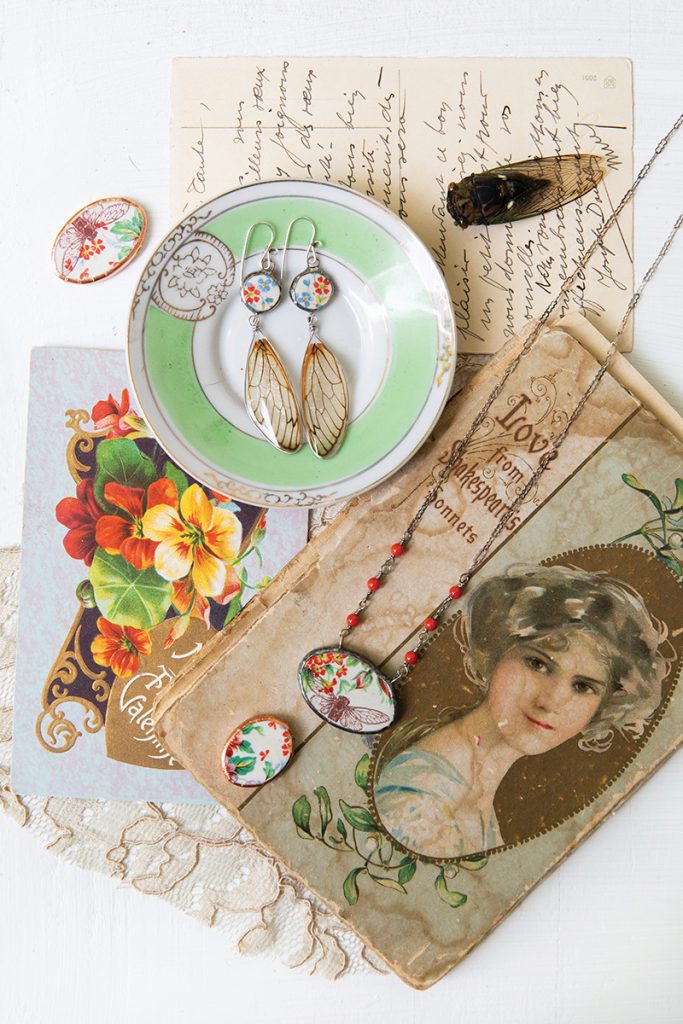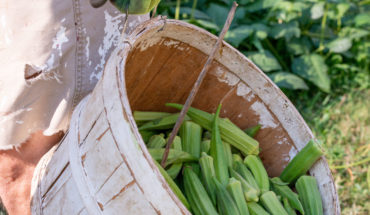This Oakwood artist collects the specimen’s intricate wings as the focal point of her vintage-style earrings and necklaces.
by Debbie Moose | photography by Taylor McDonald
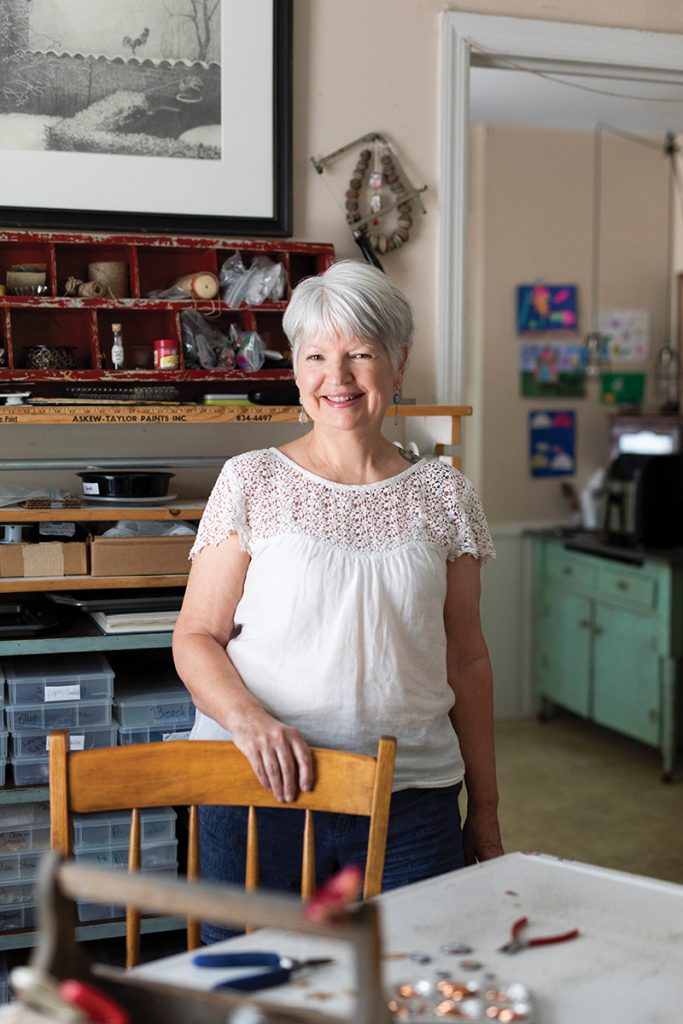
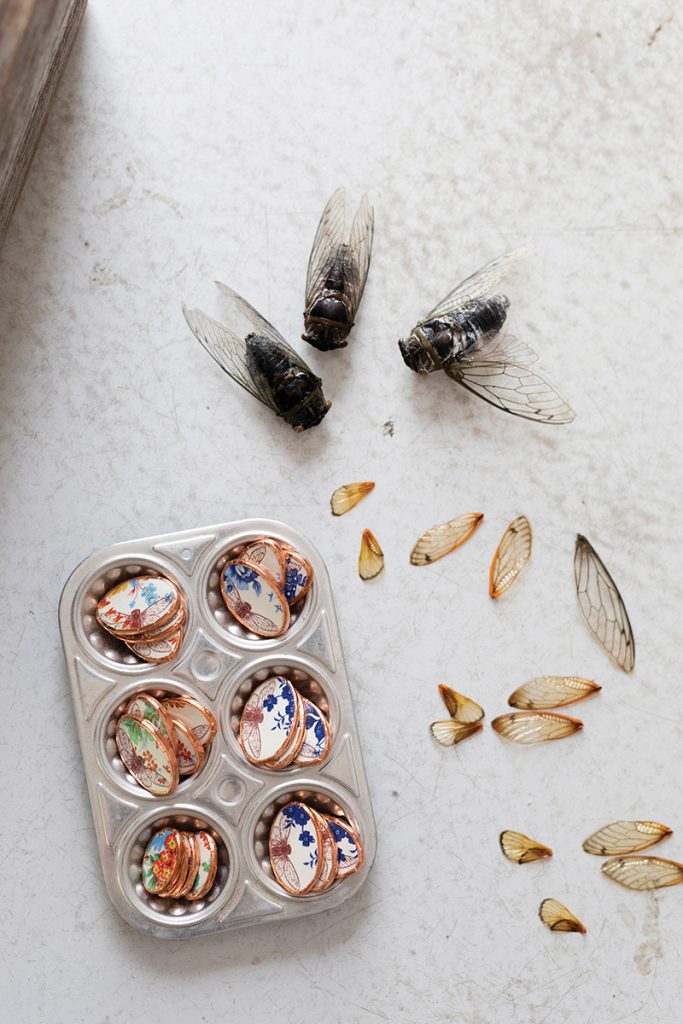
When Susan Reynolds gets ready to make jewelry, the first thing she does is open a window and light a scented candle. It’s stinky work to craft her pieces — mainly because her raw materials consist of dead cicadas.
Reynolds has been making earrings and pendants using the wings of those noisy creatures for more than 20 years. Inspiration struck when a cicada dropped from a tree onto her head while she was walking her dog near her home in Historic Oakwood. She picked it up, examined it and was fascinated by its wings.
“I’ve always loved natural wonders,” Reynolds says. “The cicada leaves behind such a fascinating exoskeleton.” Reynolds already had a jewelry-making business, incorporating precious and semi-precious stones into antique-style designs. In fact, she’d already been studying the structure of insect wings, trying to recreate their forms using wire. That cicada, though, inspired a new thought — to use the actual wings of the cicada as the focal point of her pieces.
Through trial and error, Reynolds perfected a technique of using resin to preserve the wings, adding jewels to accent their delicate nature in earrings and pendants. She took the finished products to shops that already sold her work or had seen it at shows. Most shop owners were fascinated, although one was hesitant. “One owner didn’t think she’d be able to sell them — she was grossed out about them being bugs — but she took a few, anyway. When they sold, she got more. She said she’d still never wear them, but her customers sure liked them,” Reynolds says.
Today, Reynolds sells about 360 pairs of cicada-wing earrings a year, and they’re available at more than a dozen stores in North Carolina and Virginia, including the gift shops at the North Carolina Museums of History and Natural Sciences, as well as through an Etsy shop.
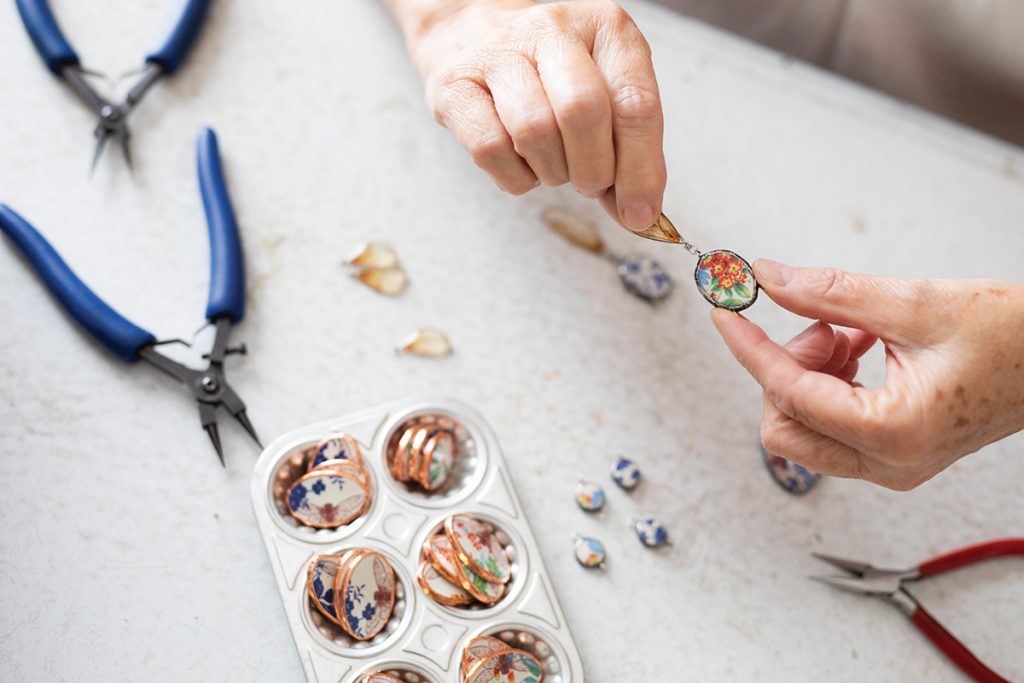
Each summer, Reynolds collects dead cicadas and stores them in her freezer until she’s ready to work. Early on, Reynolds wondered how she’d get enough: to make 800 pairs of earrings, allowing for damaged wings and single wings for necklaces, she’d need more than 400 cicadas. But she receives a steady supply, mailed from customers who have purchased the earrings or dropped off by friends and neighbors. Even her mail carrier delivers cicadas found on the route. She keeps a box on her doorstep for contributions to the artist known to many as the “cicada lady.”
“I don’t mind being called that,” she says, laughing. Since Reynolds began keeping count in 2020, she has worked with more than 1,000 cicadas, and at any given time, you can expect to find a couple of large bags of them in her freezer.
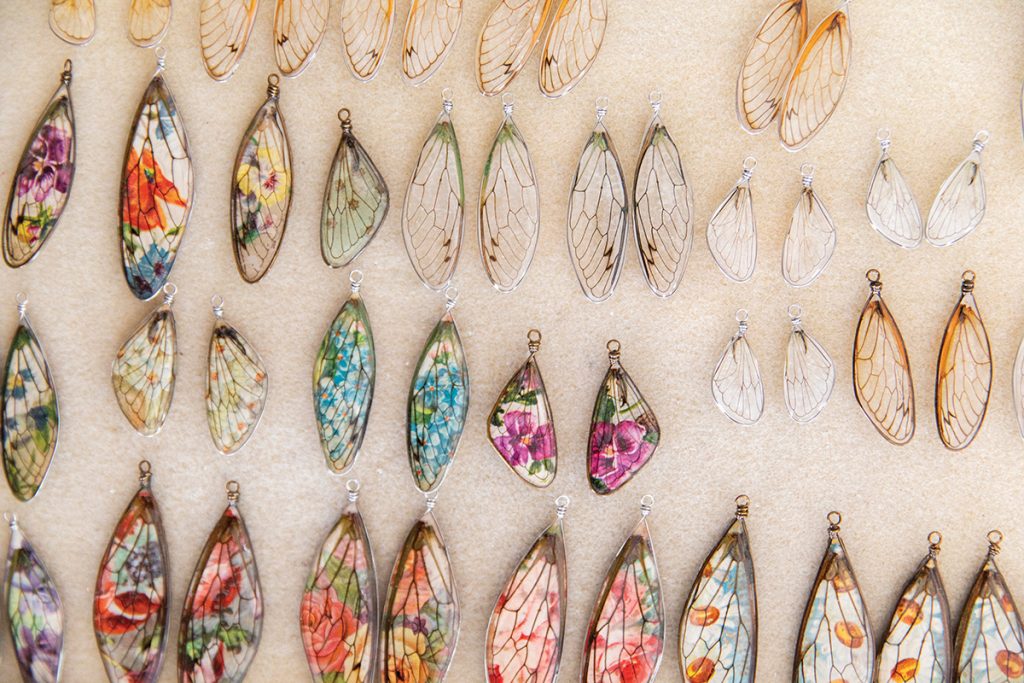
When Reynolds is ready to work, she masks up and pulls out a handful of cicadas. Each has two pairs of wings, the smaller fore wings and larger hind wings. “The wings are surprisingly delicate for a bug that’s so loud and clumsy,” she says. Using surgical scissors, she snips the wings from the bodies and soaks them in soapy water to remove any dirt. (As for the parts she doesn’t use?
They’re food for the neighborhood squirrels and chickens, and she has a friend who takes some of the bodies for fly-fishing bait.) When the wings dry, the creativity begins. In the beginning, she left the wings unadorned to show off their structure or studded them with a few Swarovski crystals for sparkle.
Now, she likes to incorporate designs cut from antique postcards to create a Victorian-inspired look. She places the designs on the wings, then coats them with several layers of clear resin, letting them set between coats. It takes about five days to complete a pair of earrings.

This spring, two separate broods emerged in the eastern and central U.S., making it the most active cicada season since 2021. With the anticipation of lots of raw materials, Reynolds brainstormed new ways to highlight the wings.
One of her new projects is a collaboration with Raleigh potter Liz Kelly. Kelly is creating porcelain cabochons to combine with Reynolds’ wings or to be used as stand-alone charms. They depict the insects with their wings spread — although at first glance, you might think they’re butterflies. “The goal for me is to make people look twice,” Kelly says. She combines vintage decals with transfers she’s designed, which she places on oval pieces of white ceramic.
Kelly liked the idea of making bugs beautiful, and the project tapped into a deep connection to cicadas. “When I was a child, I had a cicada collection. I remember gathering them up with my grandmother. I’ve always loved natural wonders and natural material,” Kelly says.
Reynolds thinks that it’s just that sentiment that attracts people to her work: “I get a lot of fan mail, which I never expected. People share childhood memories of hearing cicadas, of picking them up. There are so many sweet stories.”

This article originally appeared in the June 2024 issue of WALTER magazine.

